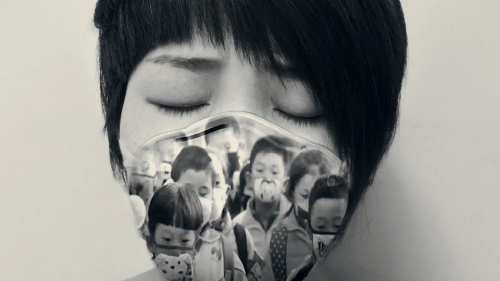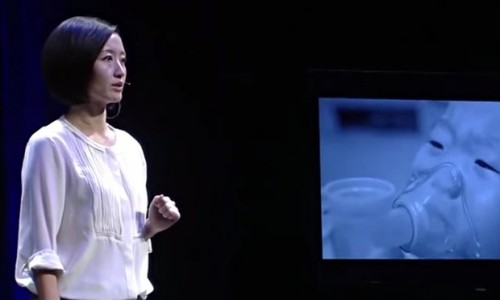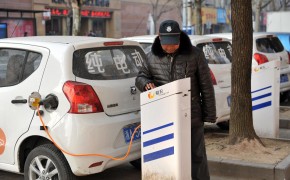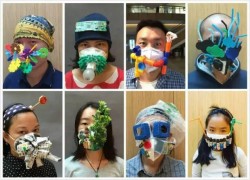Pollution and the Solution: Creating Change Through Activism, Innovation, and Artistic Expression

The recent decision by President Trump to withdraw the United States from the Paris Climate Accord signifies a crucial transition in global leadership on the issue of climate change. The Paris agreement unified the world community in 2016 when 194 states and the European Union signed the document, agreeing on a collective obligation to mitigate global warming. The two most notable signatures came from the two countries with the largest greenhouse gas emissions: China and the US.
The United States’ commitment to expanding clean energy innovation through global projects such as Mission Innovation previously placed them at the front of the world stage in combating climate change. However, the United States’ withdrawal abdicates its leading role and creates ample opportunity for China to step up to the plate and assume a new global leadership position.
“All parties should work together to implement the Paris agreement. China will continue to take steps to tackle climate change and fully honor its obligations” – President Xi Jinping
China, Coal Burning, and Climate Change
After China ratified the Paris Agreement, it implemented significant policies to address climate change, most notably to reduce coal consumption. Coal burning is the leading worldwide cause of climate change, as well as China’s biggest source of air pollution and greenhouse gas emissions. Not only is it responsible for around 40 percent of the deadly particle PM2.5 in the country’s atmosphere, it also causes the most air-pollution related deaths.

PM2.5 combines with vapor in the air to produce smog, China’s most critical pollution problem. In November 2016, the Chinese government issued its first red alert when the smog outside reached hazardous levels. Schools, factories, and expressways were shut down all across China, and “smog refugees” fled cities such as Beijing and Tianjin to escape the hazardous breathing and living conditions.
Red alerts actually represent progress in the Chinese government’s battle against air pollution. After the “airpocalypse” in 2013, when Beijing was enveloped in a cloud of thick smog, the central government responded with a National Pollution Action Plan. The plan aims to reduce coal consumption and improve overall air quality by 2017.
Public Activism in the Face of Pollution

While China’s central government has taken measures through global collaboration and new national policy to beat the “war” on pollution, a grassroots movement through social media has empowered Chinese citizens to join in the battle. Following the airpocalypse, many Chinese environmental activists took to Weibo, a microblogging service, to voice concerns of pollution in their cities. Photos and videos circulated on the internet sparked online discussion as well as many public protests across the country. Beijing resident, Zou Yi, took a photo of the view outside his window every day for three years and posted them on Wechat, a popular Chinese instant messaging service, using the hashtag #BeijingAirNow. His photos were encouraged by other Chinese internet users and generated wide discussion on the limitations of public debate and discussion in China.
“Chinese people were like shattered glass before we had Weibo. There was no way to unite,” – Deng Fei, environmental activist with nearly four million Weibo followers
In 2015, the viral documentary “Under The Dome” called for public action in “standing up” against hazardous pollution conditions, by reporting environmental laws violations and demanding change. The documentary became an Internet sensation and prompted Premier Li Keqiang to vow that the government would increase efforts to combat pollution. Even more recently, five lawyers in China filed lawsuits against several city governments for failing to clear up the chronic air pollution. The lawyers hope public pressure against the Chinese government will enact change in attitudes towards prioritizing resolution of air pollution issues.

Paving a New Future Through Technological Innovation

Airborne pollution has also fueled an in-country push for clean technology ventures and green-inspired innovation, with China pledging $361 billion in renewable power by 2020. China leads in the anti-pollution technology market, providing high-end air purifiers, face masks, and even skin-care products for common Chinese citizens. The Aviation Industry Corporation of China has also recently developed an air drone that releases chemicals enabling deadly particles in the air to fall to the ground, and Studio Twist’s new design concept, Green Air Hotel, utilizes air-purifying plants to turn old Chinese hotels into lush, pollution-eating environments.

China also champions worldwide in the innovation of the electric vehicle, surpassing even the US in 2017 with the number of new EV registered. Electric vehicles are heavily supported in China through private Chinese investments as well as through government funding of new energy projects. With the largest automobile market in the world, China embraces EV technology to allow people to have cars without jeopardizing air quality.
Most recently, China launched the largest floating solar energy plant in the world, located on a man-made lake in Anhui province. Building on bodies of water not only protects agricultural land, but also allows for the electronics in the solar panels to work more efficiently. The new plant joins China’s other non-floating solar projects, including the LongYanXia Dam Solar Park on the Tibetan Plateau and a project in the Ningxia Autonomous Region. China’s commitment to developing clean energy through its “Made In China 2025” program enables such creativity within the sphere of technological innovation. Xiao Fuqing, the chief engineer at Sungrow’s floating panel project, says “This technology shows that China is keeping the leading role in solar, as it has for many years. We have been the pioneers, and pushed our industry another small step forward.”
Sparking Social Dialogue Through Creative Expression

Amidst the discussion generated around public activism and technological innovation as a means of fighting pollution emerges a new wave of creativity in China, one funneled through the realms of art, fashion, and design. Many artists in China have looked to pollution as sources of artistic inspiration, such as artist Wen Fang’s mask designs, fashion designer Chi Zhang’s clothing line and environmental activist Zhang Ling Ling’s smog perfume.

Brother Nut, a performance artist in Beijing, literally created art out of pollution, when he used a vacuum cleaner to suck up the outside air and turned the dusty substances into a brick which was incorporated into a traditional Beijing courtyard home. His piece quickly became viral in China as a new and strong symbol of the battle against air pollution. He says “Most of my works reflect the issues that exist in the society I’m living in. Fresh air, bright sunlight, these are basic needs for our survival. We can’t have them now, and this is my way to speak out.”
Another Beijing-based artist, Kong Ning, turned symbols of pollution into art when she affixed face masks to a wedding gown and stood outside CCTV headquarters in her performance piece, “Marry the Blue Sky.” Ning rose to fame in China as an artist frustrated by smog but able to channel her frustrations into constructive works of art and symbolic expression.

Following the red alerts in 2015, Dutch designer and architect Daan Roosegarde created the world’s largest air purifier, known as the Smog Free Tower. The carbon in air pollution collected from the tower is pressurized and converted into diamonds, literally turning pollution into jewelry. The purifier is designed to be mobile and is intended to be brought to cities all over China. Dan believes “Beijing should not be ashamed of their pollution, as this is a problem for every city. It should see itself as a place of innovation; once they have solved this [problem] in a new way, all cities will come to them to learn.”
A Catalyst for Change
Through the outlets of public activism, technological innovation, and creative expression, Chinese citizens have raised awareness on issues critical to their health and well-being, as well as pushed for change within their country to better living standards for current and future generations. We here at Project Pengyou are inspired by the efforts of China and its people to create change within their communities and hope for a cleaner, brighter, and bluer future for all pengyous.
Sources: NYTimes, Guardian, Washington Post, South China Morning Post, CNN, The Atlantic, Greenpeace, NPR, LATimes, Smithsonian, Inhabitat, QZ
Strike a balance between limitless and limited energy. Limited energy like coal burning and Limitless energy like high winds, green crude, next wave, star power, deep heat and eternal sunshine should be used on a 50:50 basis. It will too expensive to use limitless energy on a 100:0 basis.